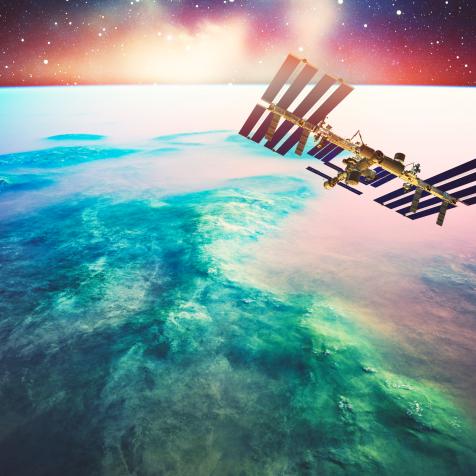An Astronomical Review of “Don’t Look Up”

In our annual New Year’s family tradition of struggling to stay awake until midnight, we decided to watch “Don’t Look Up,” the Adam McKay satire starring Leonardo DiCaprio, Jennifer Lawrence, and other fabulously good-looking people.
If you don’t want to read spoilers, then don’t look down!
In the movie, astronomers discover an extinction-level comet heading straight for the Earth, but their attempts to galvanize support to mitigate the threat are flummoxed by ineptitude, greed, and all the other usual human vices.
In the end, the comet wins, and humanity is served its just deserts.
As a scientist, I rarely criticize movies for getting the science wrong, because a) I’m not here to grade homework, and b) I want to enjoy a good story as much as anybody else. So when I watch a movie, I usually turn off the physics part of my brain and pretend that it’s all happening in a parallel universe where the laws of physics are similar to but slightly different from, the ones I’m familiar with.
Asteroid impact, computer artwork.
The opening scenes with the discovery of the comet and the ensuring jargon-filled discussions weren’t entirely accurate, but not objectionable enough to mention further comment. Instead, what I found much more interesting was the portrayal of the relationship between scientists and the public, and scientists and policymakers.
Which was so accurate it was uncomfortable to watch at times.
The movie was originally developed to be a satire of our (non-)response to climate change, but the COVID-19 pandemic provided too rich of an opportunity to pass by. I think the movie suffered for it, as the second half lacked focus. But in either case, the film highlighted how scientists have to navigate difficult, evolving circumstances – and how they’re far from perfect at it.
Multiple times I’ve sat in TV interviews where reporters ask me silly questions and hear answers that they don’t understand, looking for opportunities to make a joke, just like Dr. Mindy (Leonardo DiCaprio) experienced. I’m not saying that reporters are unintelligent, but the entire setup of trying to communicate complex topics in happy little soundbites is often bound to fail. When Dr. Mindy struggled, I felt his pain.
Mike Massimino at the premiere of "Don't Look Up."
When Dr. Mindy and his graduate student Kate Dibiasky (Jennifer Lawrence) approach policymakers, it’s evident that science and evidence take a back seat to political optics and opportunities for victories (and when they are initially not believed because they hail from Michigan State – which has an amazing astronomy department – and not the Ivy League, I cringed along with them).
When tech guru Peter Isherwell (Mark Rylance) offers an opportunity for a financial windfall despite the suffering caused by an impact, it becomes clear where true priorities lay.
Throughout the movie, the scientists find themselves used as pawns to advance carefully crafted messages. The scientists become the face, the authority, the trusted source, to sell a desired outcome that sounds like it’s based on the evidence, but isn’t.
Indeed, even Dr. Mindy loses his sense of integrity, sacrificing the evidence in favor of a glamorous lifestyle and the appeal of celebrity culture.
On social media and in the larger public sphere, the scientists became either heroes or villains, distorted out of proportion based on personal preference and political leanings.
It’s through these angles that I personally found the film most cutting. Time and time again I see my fellow scientists try to speak messages that the public and our leaders don’t want to hear. And I see some scientists chase magazine covers and TV interviews, leveraging their authoritative positions to advance personal gain. I see many scientists failing at communicating basic, essential concepts – failing through both a lack of training and a lack of care.
Science communication is a tricky business, especially when the evidence points in uncomfortable directions and the vast majority of scientists are not properly equipped or prepared to do it. On how to craft a soundbite. On how to create a message that has a broad impact. On how to maintain integrity when used as a political tool. On how to lead with evidence rather than beliefs.
How would our society actually react if faced with an extinction-level comet? It’s impossible to say, but I can say that “Don’t Loop Up” precisely nailed how we would react to the scientists who made the discovery.
Learn More about the Universe
Journey Through the Cosmos in an All-New Season of How the Universe Works
The new season premieres on Science Channel and streams on discovery+.




















